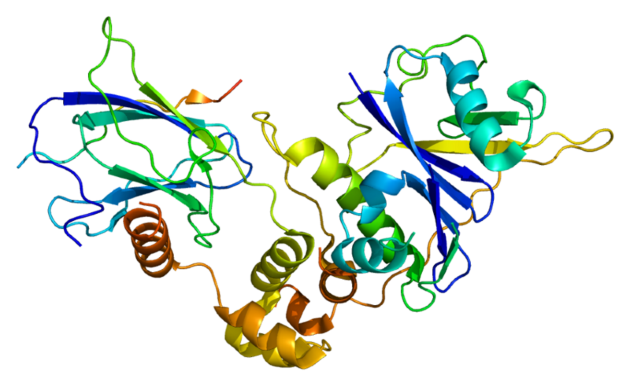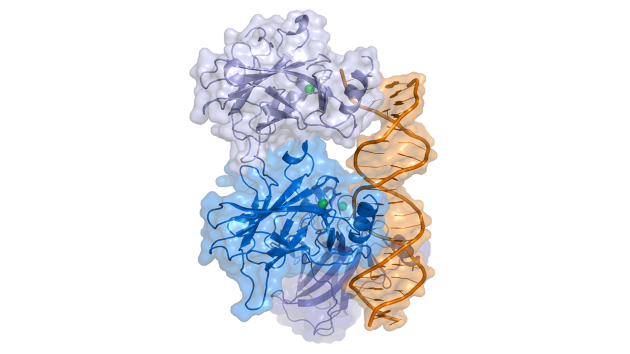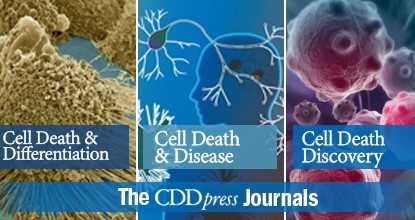Collection |
Collections
Filters
-
Collection Type
-
-
Collection |
Microorganism cell death – a new era
The ability of cells to self-destruct appears to be essential for cellular life. However, the existence of genetically programmed death pathways in single-cell organisms has been long debated. Thus, cell death research on microorganisms was sparse while the field focused on human tumor cells, animal models and some plants. In addition, microbial death is most commonly viewed as a consequence of being killed by host immune tactics and antibiotics, rather than intrinsic microorganism cell suicide. However, a new perspective has recently emerged, stemming from elegant delineation of cell suicide mechanisms in diverse prokaryotic and eukaryotic microbes. The molecular details often resemble components of human innate immunity, further suggesting that some early forms of cell death arose in microorganisms as defense mechanisms against their own pathogens.
Open for submissions -
Collection |
 Cell Death & Disease Readers' Choice: 2020-2022
Cell Death & Disease Readers' Choice: 2020-2022
In this Collection we have collated the top read and cited articles from Cell Death & Disease from the past three years. This focus includes a spectrum of articles covering the cellular and molecular biology of disease and features original articles, as well as thought-provoking reviews and comment. Read on to see what our readers worldwide have been citing and reading.
-
Collection |
 10 Years of Cell Death & Disease
10 Years of Cell Death & Disease
The 10 year anniversary of Cell Death and Disease marks not only its tremendous growth from scratch to an internationally known journal, but its contribution to the understanding of major biomedical issues through its promotion of scientific exchange. The publications of Cell Death Disease in fields including cell biology, genetics, molecular biology, signal transduction, epigenetics and regenerative medicine have become major references in their related fields.
-
Collection |
 Recent advances in understanding inflammation
Recent advances in understanding inflammation
Uncontrolled inflammation can lead to chronic diseases since cells of the immune system, but also epithelial and endothelial cells, become inadequately activated producing cytokines, chemokines and lipid mediators. The immunopathology of chronic inflammatory diseases involves cell death, particularly in cells of epithelial origin, resulting in tissue damage and organ dysfunction. In recent years, many targeted therapies have been developed that have led to significant progress in the treatment of allergic and autoimmune diseases. In this special issue, novel aspects of the pathophysiology of inflammation, including the regulation of pyroptosis and necroptosis, barrier function, and innate immunity, are presented.
-
Collection |
 The Best of Cell Death & Disease 2018-2019
The Best of Cell Death & Disease 2018-2019
In this collection we have showcased the articles from 2018 and 2019 that you have been reading, sharing and citing. This focus features translational studies and review articles from a range of disease areas, highlighting the broad scope of articles that Cell Death & Disease publishes each year.
-
Collection |
 2019 Nobel Prize in Physiology or Medicine: Celebrating the Winners
2019 Nobel Prize in Physiology or Medicine: Celebrating the Winners
The 2019 Nobel Prize in Physiology or Medicine was jointly awarded to William G. Kaelin Jr, Sir Peter J. Ratcliffe and Gregg L. Semenza “for their discoveries of how cells sense and adapt to oxygen availability”. Collectively, their research led to an understanding of the elegant mechanism cells use to respond to changes in oxygen levels, a fundamental process that underpins normal physiologic functioning and plays a critical role in several diseases, including cancer. Via a combination of oxygen-dependant targeted destruction of the Hypoxia Inducible Factor and modulation of gene expression, cells are equipped to survive in a fluctuating environment. This pioneering research helped pave the way towards a plethora of medications that target this pathway. In celebration of their success, we have featured some of their articles in this collection, which includes content from Oncogene, British Journal of Cancer, Pediatric Research, Gene Therapy, Cell Death and Disease, and the Journal of Human Hypertension.
Image: Emw [CC BY-SA 3.0 (https://creativecommons.org/licenses/by-sa/3.0)] -
Collection |
 Best of CDDpress 2018 on p53
Best of CDDpress 2018 on p53
CDDpress, with its three journals (Cell Death & Differentiation, Cell Death & Disease, Cell Death Discovery), has just finished the publication for the year 2018, publishing insightful and high-impact articles on the frontlines of cell biology and biochemistry research. In 2018, the journals received nearly 5000 submissions and published around 1400 selected papers. Of particular interest were several pivotal and influential papers highlighting the role of p53 in cancer and other diseases. Here, with the "Best of CDDpress 2018 on p53" collection, we offer a selection of 2017-2018’s most impactful papers on p53. We hope that you will enjoy reading this special collection.
-
Collection |
 Top 25 Articles Published in Cell Death & Disease
Top 25 Articles Published in Cell Death & Disease
In celebration of 25 years of sister journal Cell Death and Differentiation, the Editors of Cell Death and Disease have selected their picks for the top 25 articles published in their journal.
-
Collection |
 Cell Death, Small Molecules, and Translational Medicine
Cell Death, Small Molecules, and Translational Medicine
The recent 26th ECDO conference ‘From small molecules to translational medicine’ in Saint-Petersburg (locally organized by Professors Zhivotovsky, Barlev and Lavrik) highlighted the recent developments in the field of cell death with a focus on the small molecules discovery and development. Pharmacological targeting via small molecule-based chemical probes has recently emerged as a valuable tool to delineate molecular mechanisms of various cell death pathways and pave the way towards novel therapeutic approaches in cancer, neurodegenerative and autoimmune diseases. We suggest the selection of articles from the CDD press that will lead through a breathtaking journey from the target –oriented drug development to translational applications.
Image: National Institutes of Health/Stocktrek Images -
Collection |
Mitochondria-Associated Membranes (MAMs) and pathologies
Mitochondria and endoplasmic reticulum (ER) play an essential role in cell physiology through the control of multiple signal transduction pathways. ER and mitochondria continuously exchange messages by a physical association between the two organelles called MAMs (Mitochondria-Associated Membranes). This communication plays a vital role in the cell fate because it has a dramatic consequence for the functioning of all the other intracellular compartments. In recent years, increasing evidence supports the notion that MAMs act as hotspot signaling domains and are deregulated in several human diseases. In this special issue, the involvement of MAMs in important human pathologies is presented.
-
Focus |
 Cell death-based treatment of various diseases edited by Dr Boris Zhivotovsky
Cell death-based treatment of various diseases edited by Dr Boris Zhivotovsky
Recent achievements in development of cell death-based approaches to treatment of various diseases are summarized in this collection of articles from Cell Death & Disease. Disturbances in cell death pathways at the molecular level are linked to the pathogenesis of various diseases. Evidence suggests that suppression or activation of one type of cell death can influence the activity of another, which in turn can affect the response of cells to therapy. We hope that this collection attracts attention to this growing area of research, and encourages the further exploitation of cell death mechanisms in the development of new treatments for human disease.

 CDDpress: Monthly Readers' Choice
CDDpress: Monthly Readers' Choice